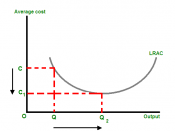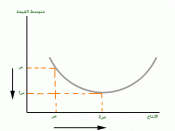1.Threat of new entrants- Barriers of entry consist of the following: economies of scale, product differentiation, capital requirements, switching costs, access to distribution channels, government policy and cost disadvantages independent of scales.
2.Bargaining power of buyers- Buyer purchases large volumes relative to the seller sales and is a significant portion of the buyer's total costs. In addition, there are few switching costs, and the buyer has all information. The product it purchases from the industry is standard or undifferentiated and unimportant to the quality of the buyers' products or services.
3.Rivalry among existing firms- Due to the intense rivalry there are numerous or equally balanced competitors, there is also a slow industry growth. In addition, there may be a high fixed or storage cost, lack of differentiation or switching costs. Also there are a diverse group of competitors, high strategic states, and high exit barriers.
4.Threat of substitute products of services- Another firm is able to offer a similar product.
5.Bargaining power of suppliers- The bargaining power of supplier is motivated by supplier power. For example there are few supplier, the industry is not an important customer of the supplier group, the suppliers products are an important input for the buyer, the suppliers has built up the cost of switching, or they poses a serious threat in a forward integration process.


